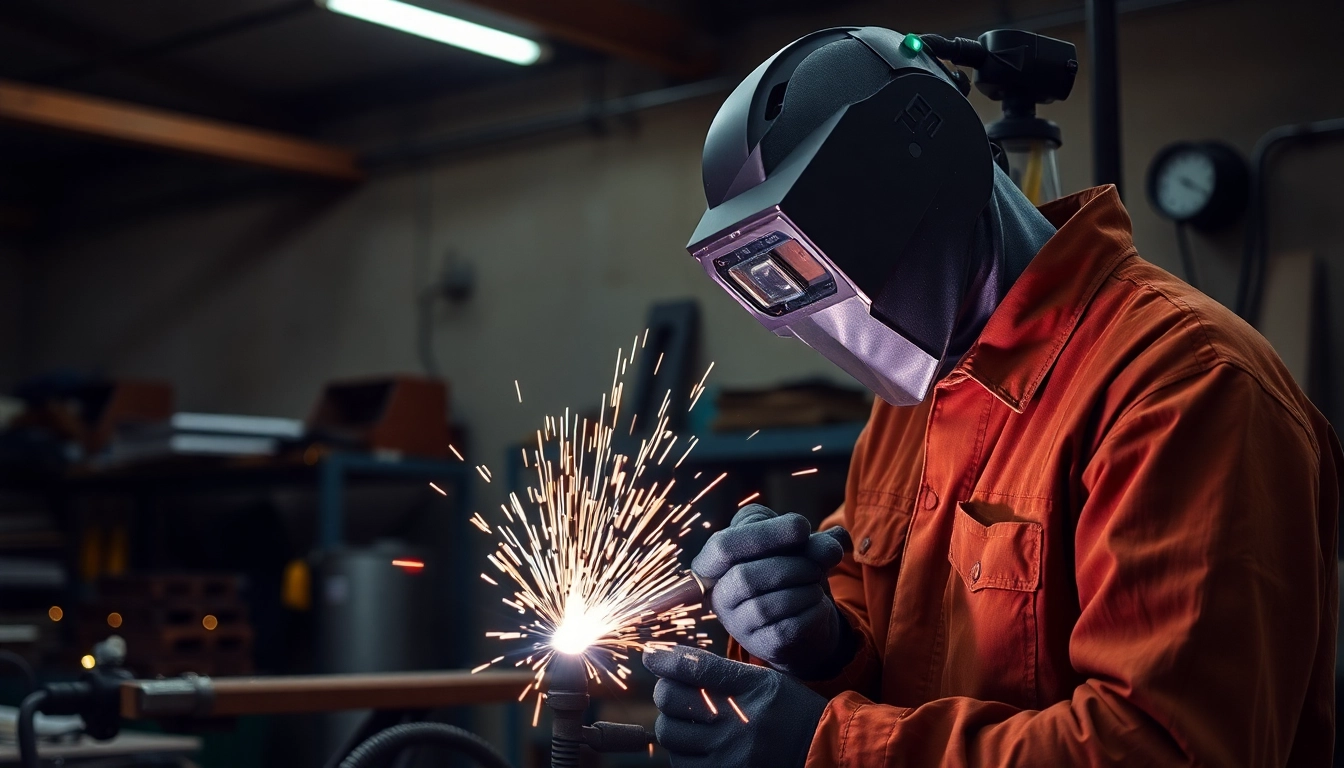1. Understanding Welding Supplies
1.1 What Are Welding Supplies?
Welding supplies encompass a broad range of products essential for various welding processes. These include equipment, materials, and protective gear that assist in joining metals through different welding techniques such as MIG (Metal Inert Gas), TIG (Tungsten Inert Gas), and Stick welding. Understanding the specific needs of a welding project often dictates which supplies are necessary. From high-quality welding machines to electrodes and gas cylinders, having the right tools can significantly impact the efficiency and outcome of welding tasks.
1.2 Types of Welding Processes and Their Supplies
There are several welding processes, each requiring unique supplies:
- MIG Welding: Involves a semi-automatic or automatic process that uses a continuous wire feed. Supplies include welding wire, gas cylinders (usually argon or a mixture), and MIG welding machines.
- TIG Welding: Known for its precision, this method uses a non-consumable tungsten electrode to produce the weld. Key supplies are tungsten electrodes, filler rods, and gas cylinders.
- Stick Welding: A simpler technique popular for outdoor work, requires consumable electrodes and a stick welding machine. The electrodes are coated to protect the weld from contamination.
1.3 Key Features of Quality Welding Supplies
Quality welding supplies are characterized by durability, compatibility with various welding machines, and compliance with safety standards. Essential aspects include:
- Manufacturing Material: High-grade steel or other robust materials that withstand high temperatures during welding.
- Brand Reputation: Trusted brands often guarantee quality and reliability in their products.
- Safety Features: Items like welding helmets must have proper shielding to protect against sparks and harmful light.
2. Must-Have Welding Equipment
2.1 Essential Welding Machines
Choosing the right welding machine is critical, as different projects may require different capabilities. Popular types include:
- MIG Welders: Ideal for beginners and for projects requiring speed and efficiency.
- TIG Welders: Perfect for intricate projects requiring fine detail.
- Stick Welders: Suitable for welding in outdoor conditions or on thicker materials.
2.2 Protective Gear for Safe Welding
Safety should be a top priority when engaging in welding. Key protective gear includes:
- Welding Helmets: Protect eyes from bright light and filters UV rays.
- Protective Clothing: Flame-resistant jackets and gloves are essential to protect skin from sparks.
- Respiratory Protection: Masks that filter out fumes and particulates are vital in poorly ventilated areas.
2.3 Common Accessories and Consumables
To ensure efficient welding operations, various accessories are necessary:
- Electrodes: Different types of electrodes are required for different welding processes.
- Welding Wire: Essential for both MIG and TIG welding, selection based on metal type and thickness is crucial.
- Gas Cylinders: Argon, CO2, and oxygen are commonly used gases that need to be properly stored and maintained.
3. Choosing the Right Welding Supplies
3.1 Factors to Consider Before Purchase
Selecting the right welding supplies involves assessing various factors, including:
- Project Requirements: Different projects require unique supplies that match specific weld types.
- Experience Level: Beginners may need simpler machines and consumables than advanced welders.
- Budget: Pricing can vary greatly among brands and products, so a budget is essential.
3.2 Top Brands in Welding Supplies
Some brands stand out in the welding supplies landscape for their reliability and quality:
- Miller Electric: Renowned for their welding machines and protective gear.
- Lincoln Electric: Offers a wide range of welding equipment and is noted for innovation and quality.
- ESAB: Known for its consumables and safety equipment.
3.3 Comparing Prices and Quality
Price comparison between welding supplies can help identify the best value. It’s essential to balance quality with cost, as lower-priced items may compromise safety or durability. Online platforms and local shops often provide insights into market prices.
4. Maintenance of Welding Supplies
4.1 Care Tips for Welding Equipment
Proper maintenance of welding equipment ensures longevity and efficiency. Key care tips include:
- Regular Cleaning: Ensure machines and tools are free from debris and contaminants after use.
- Routine Inspections: Check for wear or damage regularly to prevent larger issues.
- Lubrication: Keep moving parts lubricated for smooth operation.
4.2 Storage Solutions for Welding Supplies
Proper storage of welding supplies can prevent damage and loss. Recommendations include:
- Organized Workspaces: Keeping tools and materials in labeled containers enhances efficiency.
- Secure Location: Store gases and flammable materials away from heat sources and in well-ventilated areas.
4.3 Extending the Lifespan of Your Equipment
Long-term investments in welding supplies can be protected by:
- Correct Usage: Familiarizing oneself with manufacturer instructions to use equipment correctly.
- Storing Safely: Protecting machines from exposure to the elements can prolong their lifespan.
5. Where to Buy Quality Welding Supplies
5.1 Best Online Welding Supply Stores
Online platforms have revolutionized the accessibility of welding supplies. Websites like welding supplies offer a variety of products, often at competitive prices. They provide detailed descriptions, customer reviews, and sometimes tutorials that can aid in selection.
5.2 Local Supply Shops in Your Area
Local welding supply shops can be an excellent choice for hands-on purchasing. Visiting a store allows for direct inquiries, examining products before buying, and often gaining local insights on popular items.
5.3 Getting Discounts on Welding Supplies
Discounts can often be found through seasonal sales, newsletters from suppliers, or membership programs. Joining local welding associations may also offer access to exclusive deals and promotions.
